Abstract
Detailed serological studies have been undertaken in a small group of cancer patients receiving nonspecific immunotherapy with Corynebacterium parvum (C. parvum). These patients included 4 cases of recurrent malignant melanoma, 2 of stomach cancer and 2 of recurrent breast cancer. They all received an initial i.v. infusion of 20 mg of a formol killed suspension of C. parvum followed by 2 mg (i.m.) at weekly intervals for 10-11 weeks. This protocol consistently resulted in an increase in the circulating IgG levels of all patients but had a variable effect on their IgA, IgM and IgE levels. Increases in the concentration of all 4 IgG subclasses contributed to the overall increase in IgG levels and these changes ranked IgG2 greater than IgG1 greater than IgG3 = IgG4. It also had an inconsistent effect upon the levels of alpha-macroglobulin in pregnancy but the levels of normal serum alpha2-macroglobulin were virtually unchanged. Pre-existing antibodies to C. parvum were noted in all the patients. Titres rose appreciably following C. parvum administration and remained at high, though fluctuating levels, throughout the 100-day period of observation. Absorption studies suggested that the development of antibodies to C. parvum accounted in part for the increased IgG levels noted following this form of therapy. The significance of these changes in relation to the possible anti-tumour effect of C. parvum is discussed.
Full text
PDF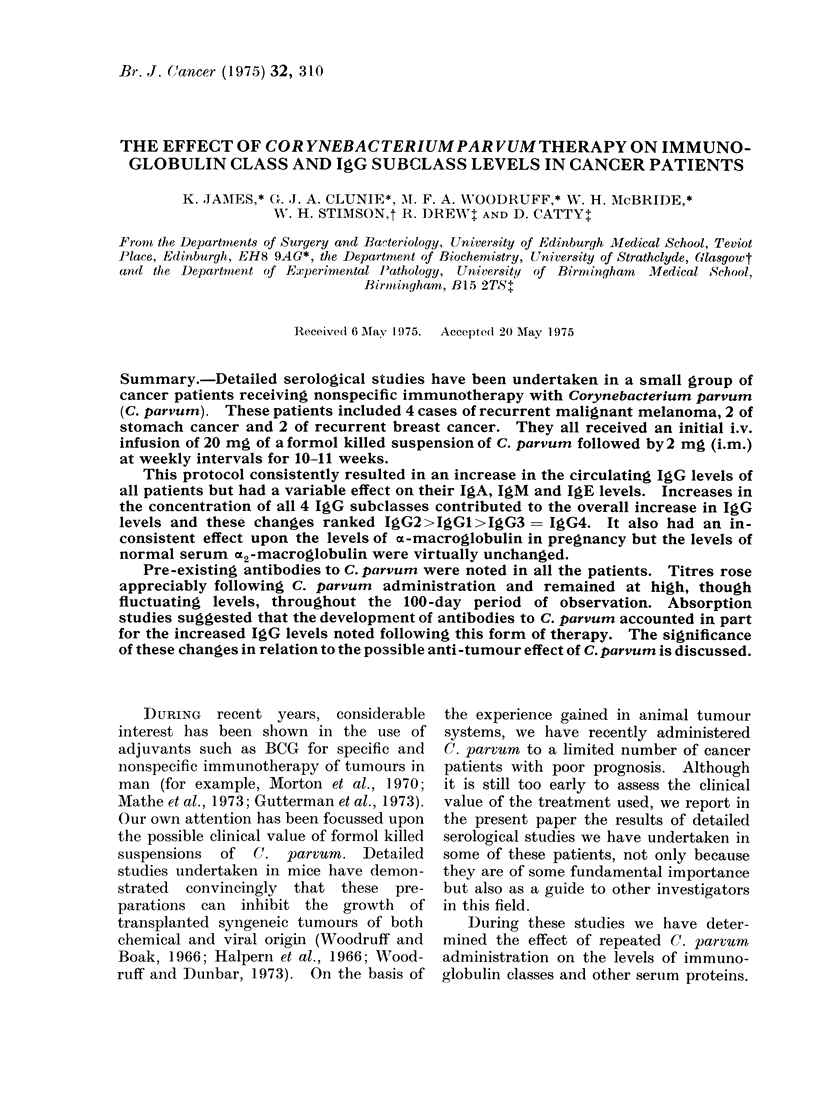
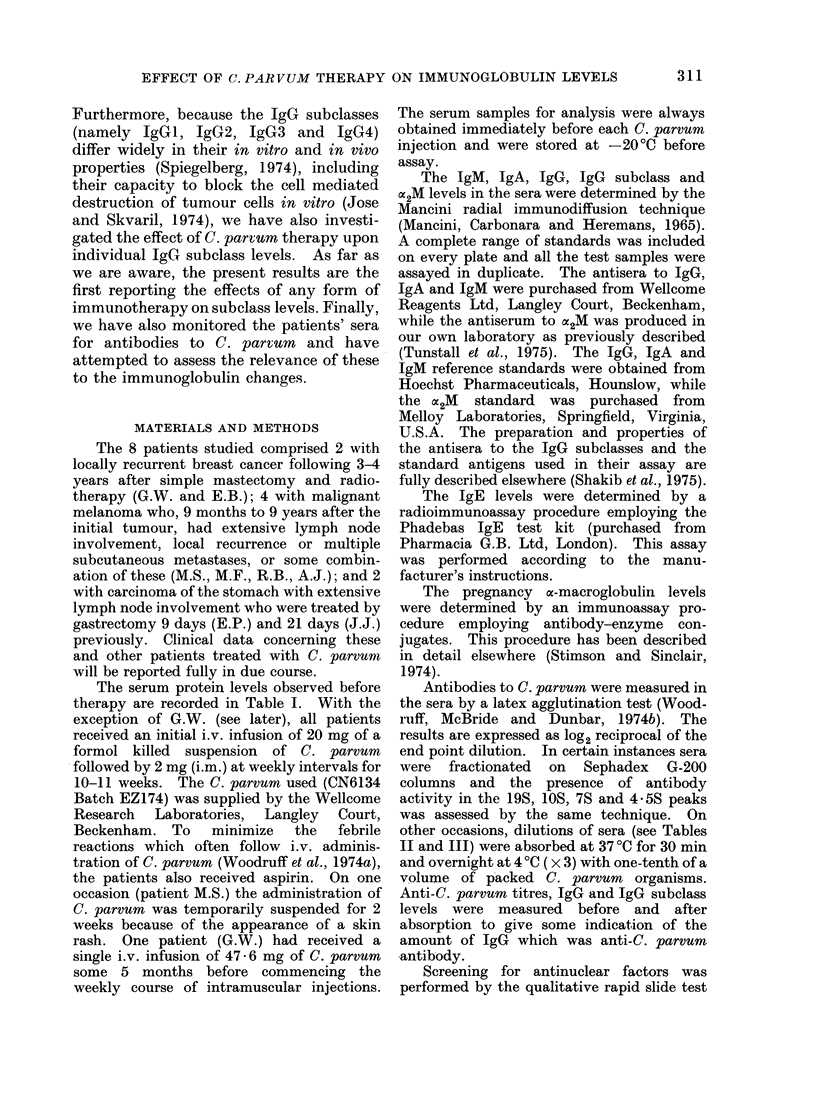
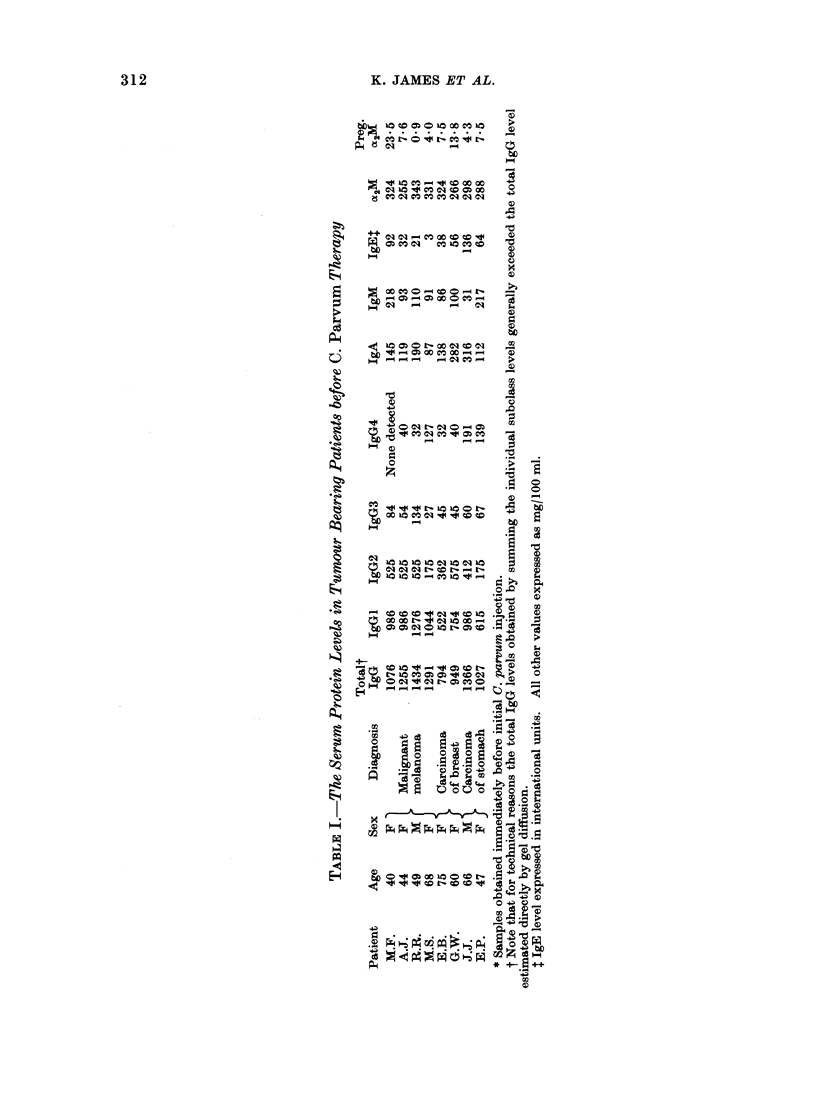
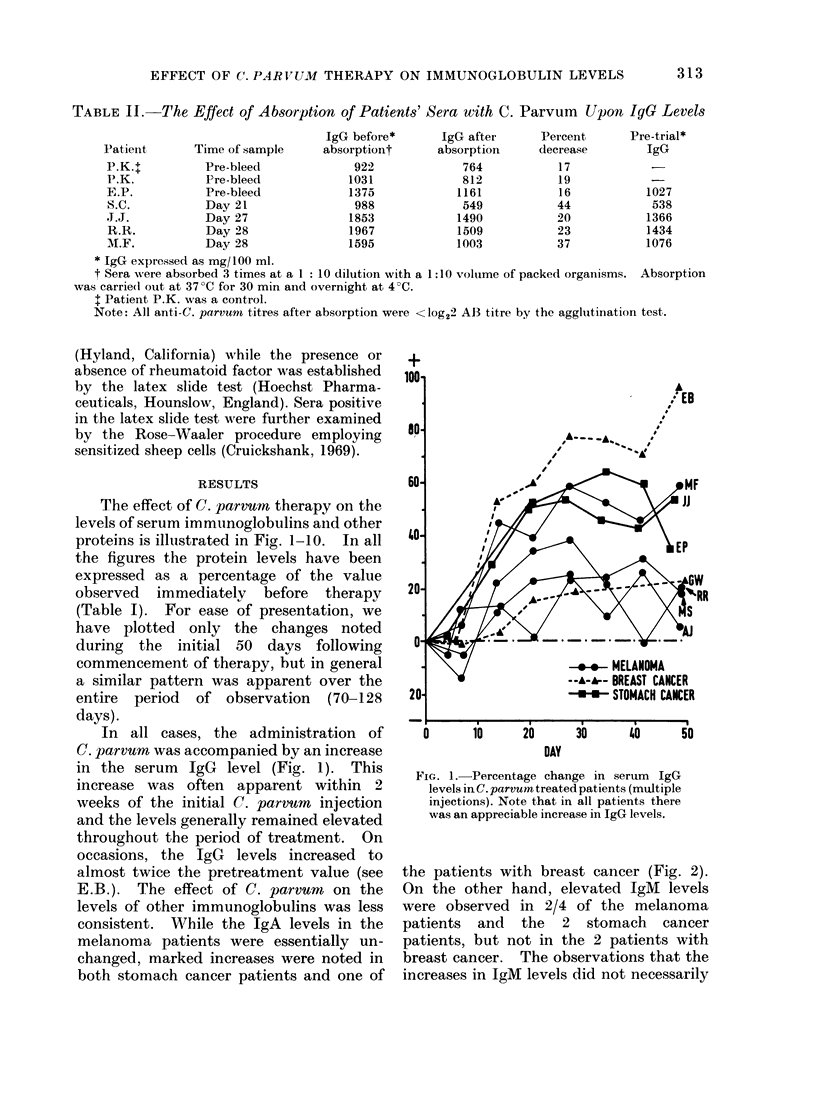
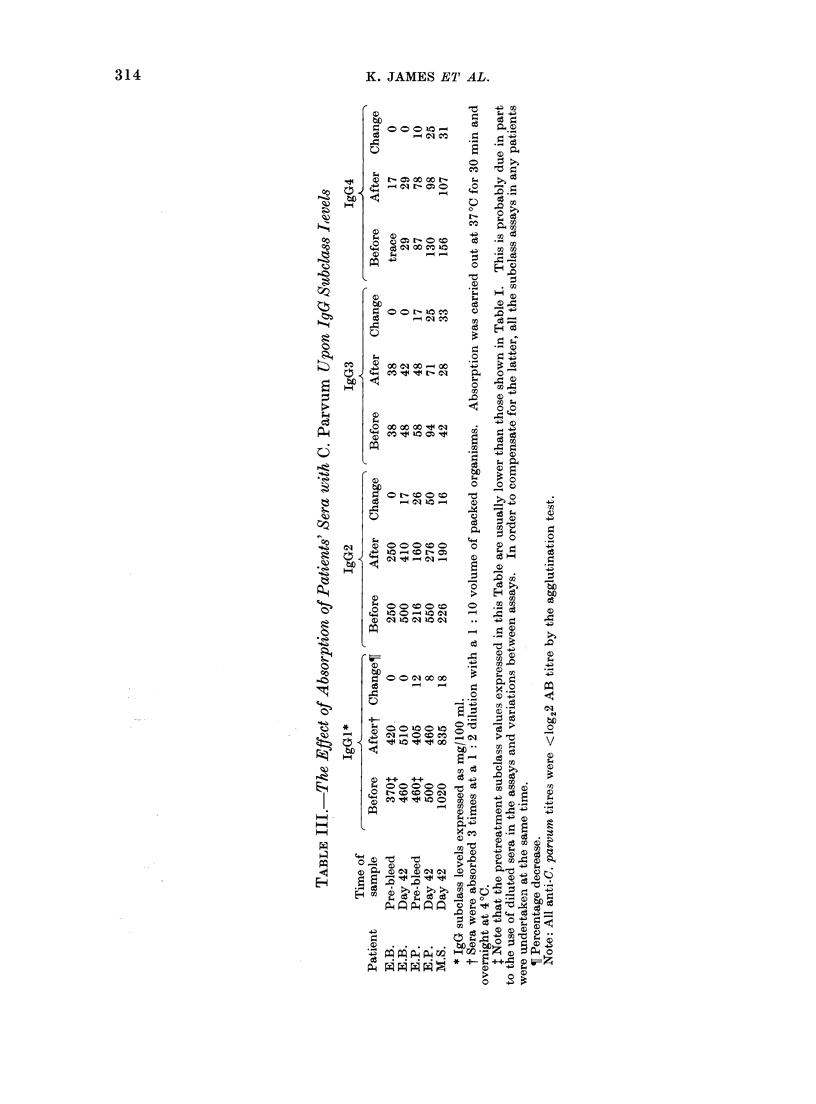
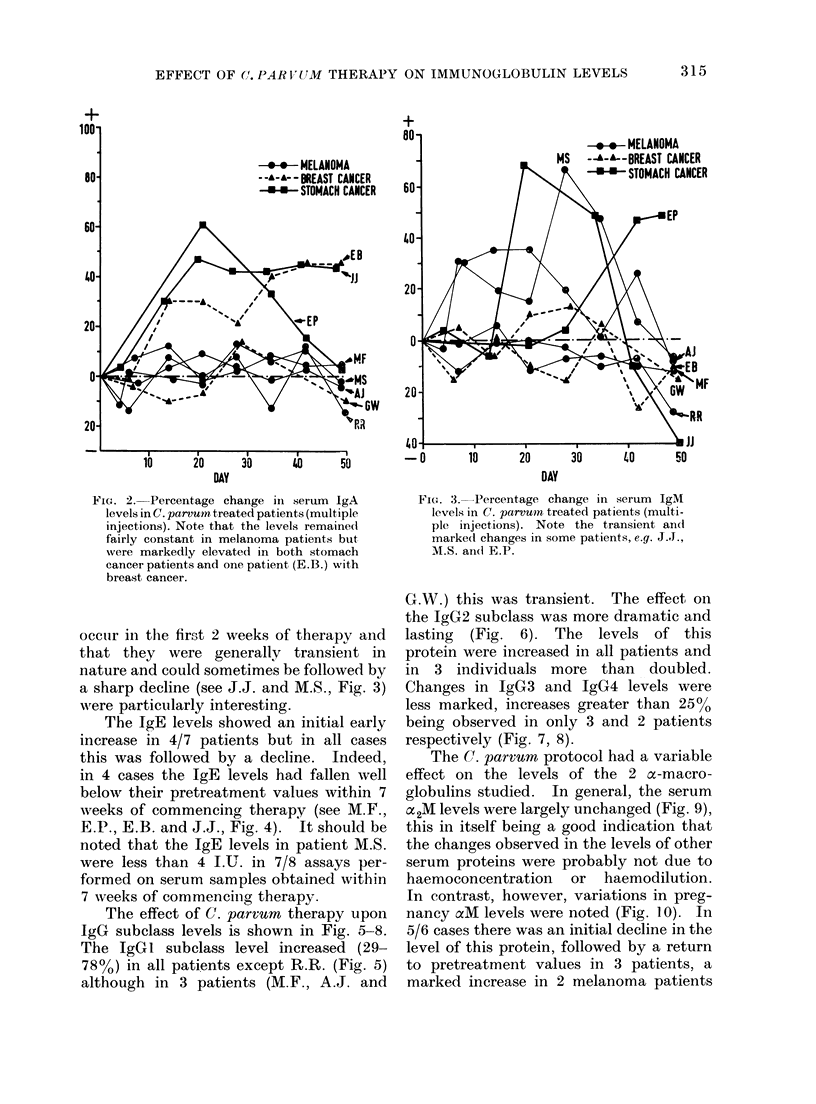
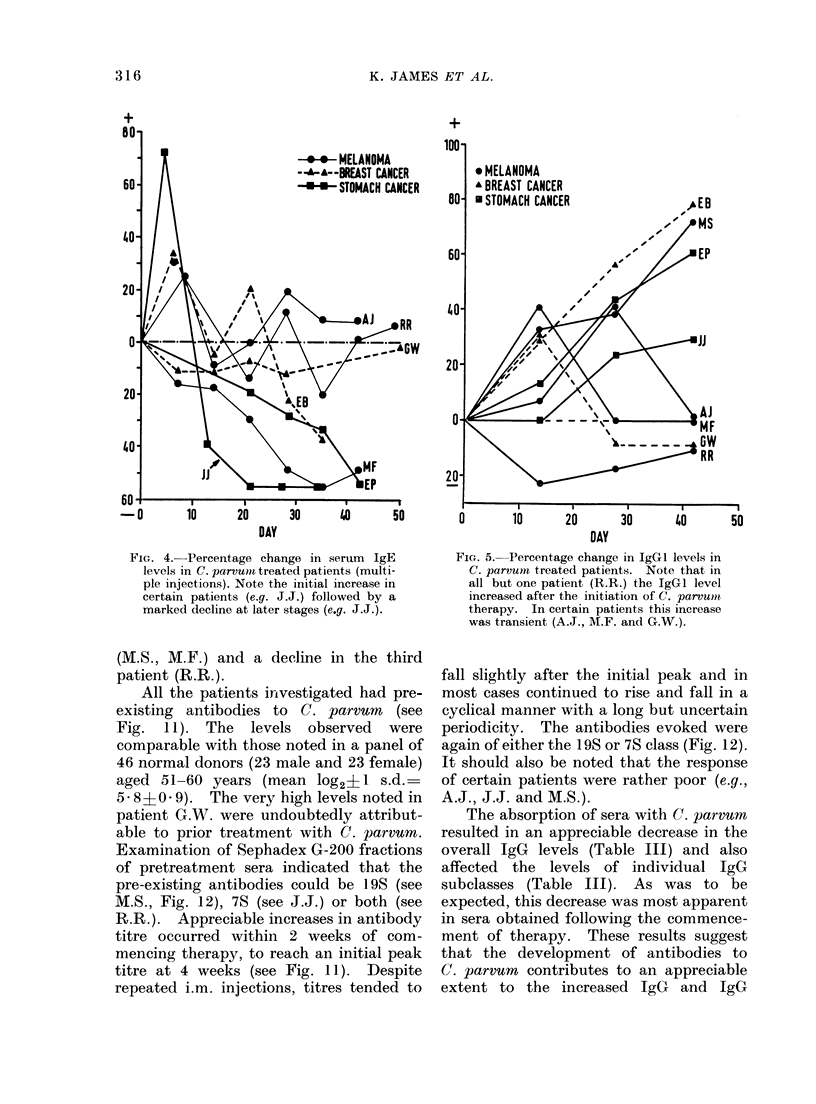

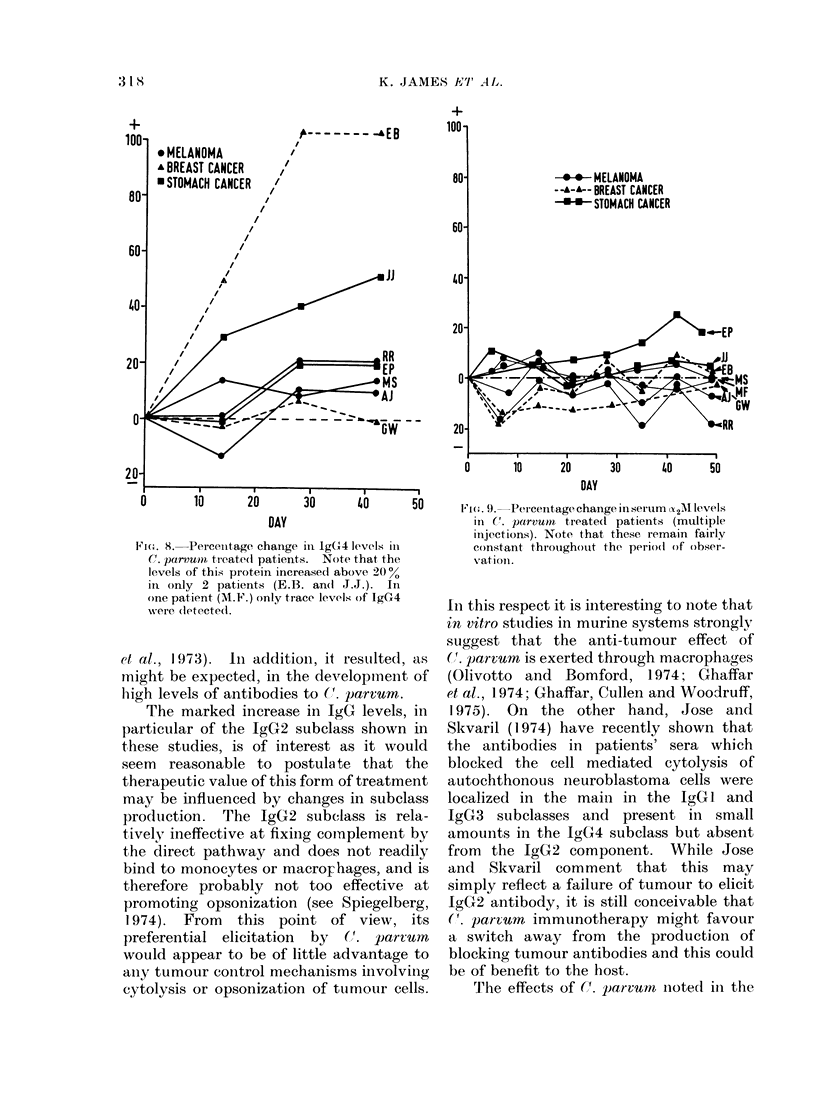
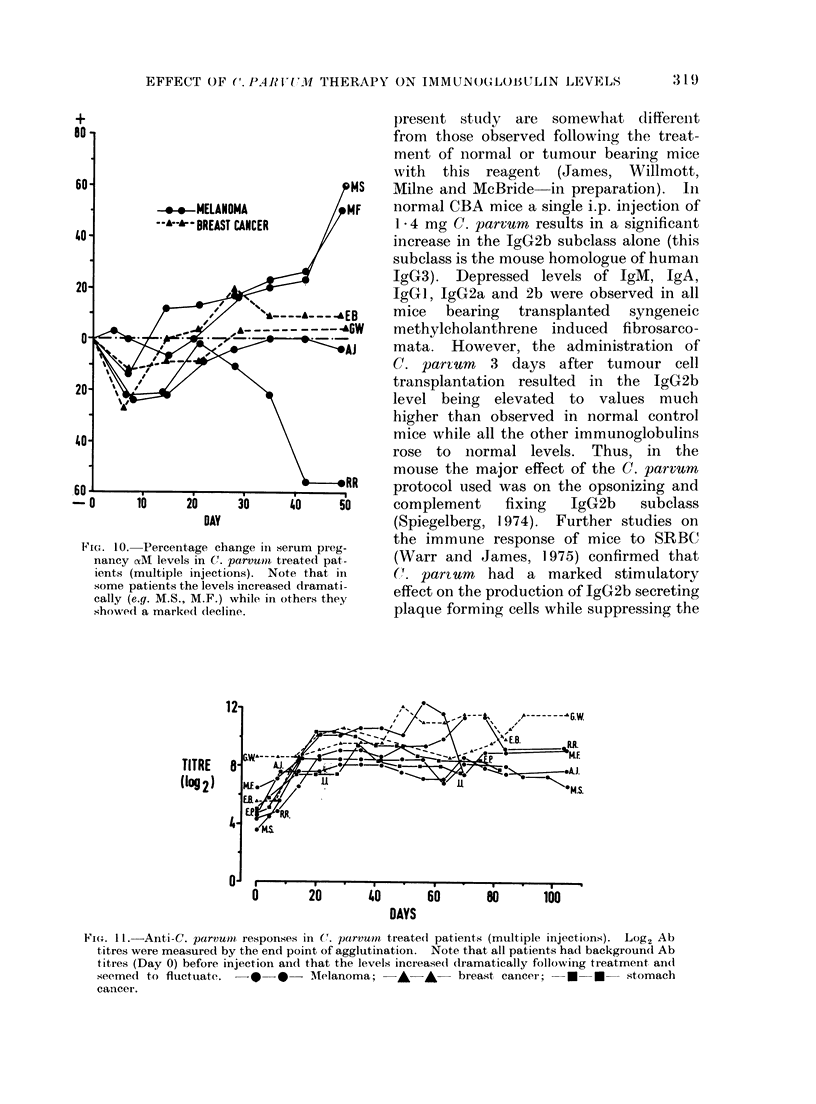
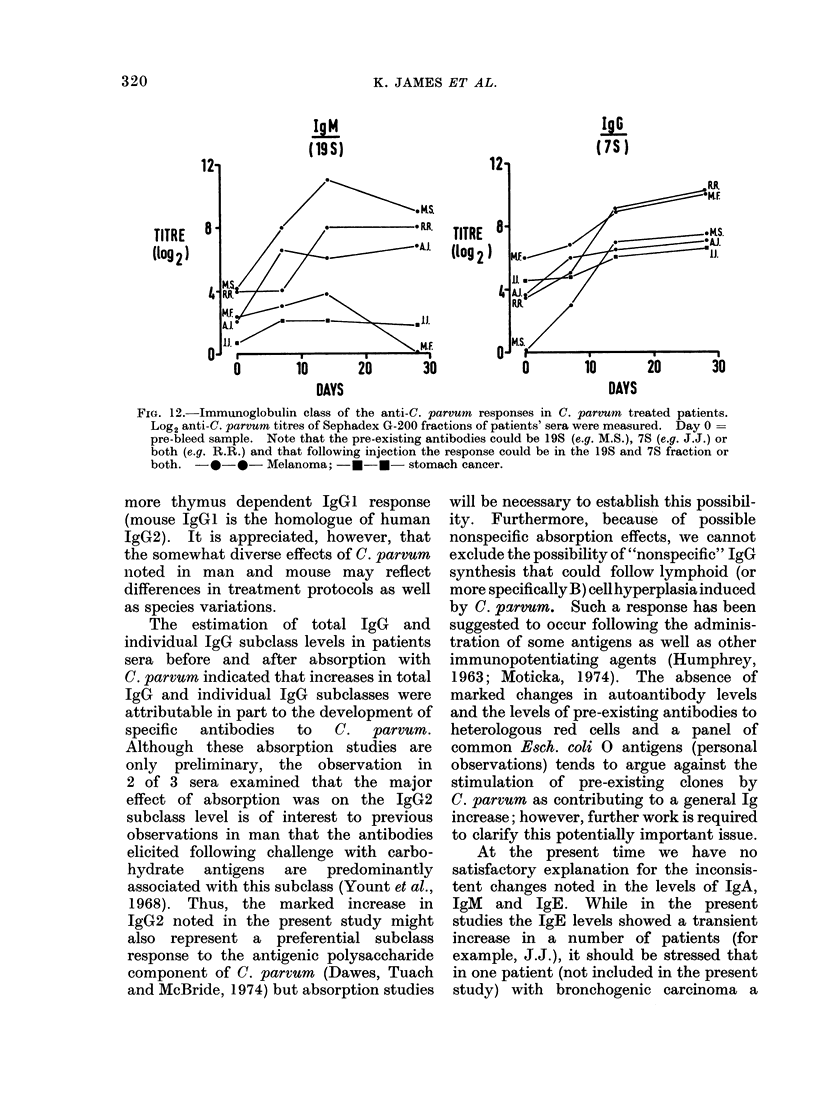
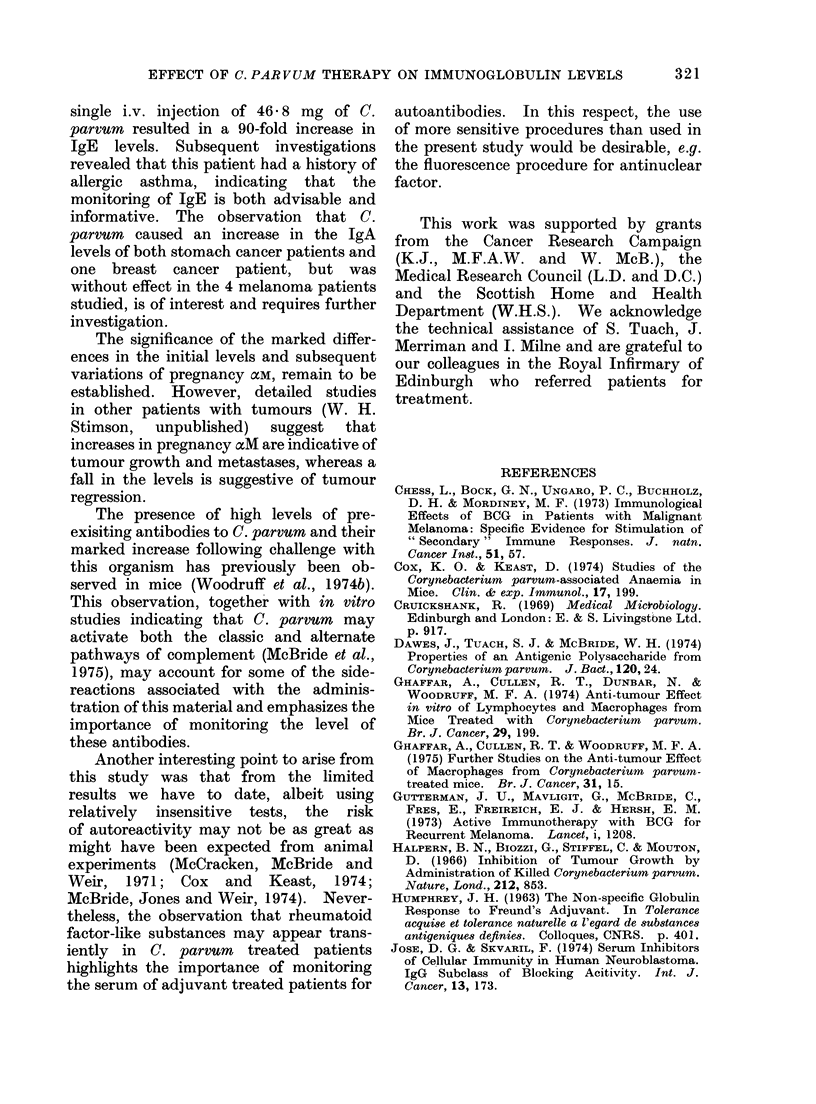
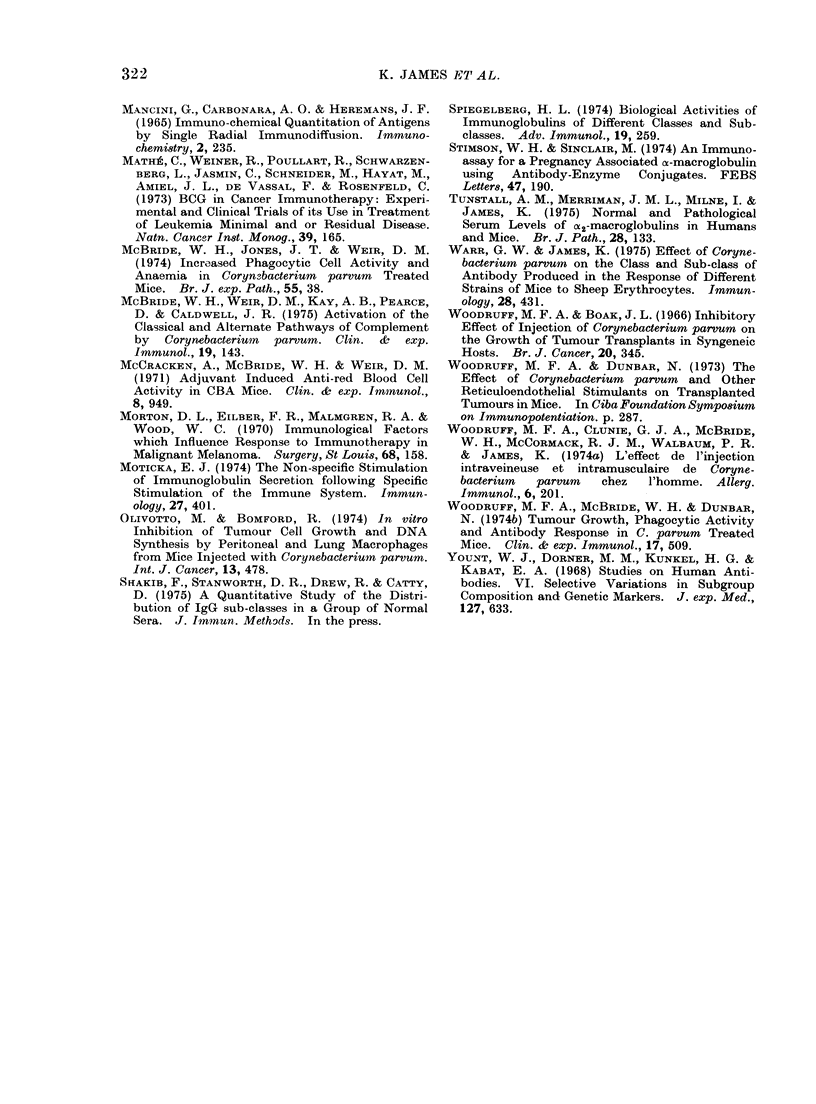
Selected References
These references are in PubMed. This may not be the complete list of references from this article.
- Cox K. O., Keast D. Studies of the Corynebacterium parvum-associated anaemia in mice. Clin Exp Immunol. 1974 May;17(1):199–207. [PMC free article] [PubMed] [Google Scholar]
- Dawes J., Tuach S. J., McBride W. H. Properties of an antigenic polysaccharide from Corynebacterium parvum. J Bacteriol. 1974 Oct;120(1):24–30. doi: 10.1128/jb.120.1.24-30.1974. [DOI] [PMC free article] [PubMed] [Google Scholar]
- Ghaffar A., Cullen R. T., Dunbar N., Woodruff M. F. Anti-tumour effect in vitro of lymphocytes and macrophages from mice treated with Corynebacterium parvum. Br J Cancer. 1974 Mar;29(3):199–205. doi: 10.1038/bjc.1974.59. [DOI] [PMC free article] [PubMed] [Google Scholar]
- Ghaffar A., Cullen R. T., Woodruff M. A. Further analysis of the anti-tumour effect in vitro of peritoneal exudate cells from mice treated with Corynebacterium parvum. Br J Cancer. 1975 Jan;31(1):15–24. doi: 10.1038/bjc.1975.3. [DOI] [PMC free article] [PubMed] [Google Scholar]
- Gutterman J. U., Mavligit G., McBride C., Frei E., 3rd, Freireich E. J., Hersh E. M. Active immunotherapy with B.C.G. for recurrent malignant melanoma. Lancet. 1973 Jun 2;1(7814):1208–1212. doi: 10.1016/s0140-6736(73)90526-6. [DOI] [PubMed] [Google Scholar]
- Halpern B. N., Biozzi G., Stiffel C., Mouton D. Inhibition of tumour growth by administration of killed corynebacterium parvum. Nature. 1966 Nov 19;212(5064):853–854. doi: 10.1038/212853a0. [DOI] [PubMed] [Google Scholar]
- Jose D. G., Skvaril F. Serum inhibitors of cellular immunity in human neuroblastoma. IgG subclass of blocking activity. Int J Cancer. 1974 Feb 15;13(2):173–178. doi: 10.1002/ijc.2910130204. [DOI] [PubMed] [Google Scholar]
- Mancini G., Carbonara A. O., Heremans J. F. Immunochemical quantitation of antigens by single radial immunodiffusion. Immunochemistry. 1965 Sep;2(3):235–254. doi: 10.1016/0019-2791(65)90004-2. [DOI] [PubMed] [Google Scholar]
- Mathé G., Weiner R., Pouillart P., Schwarzenberg L., Jasmin C., Schneider M., Hayat M., Amiel J. L., de Vassal F., Rosenfeld C. BCG in cancer immunotherapy: experimental and clinical trials of its use in treatment of leukemia minimal and or residual disease. Natl Cancer Inst Monogr. 1973 Dec;39:165–175. [PubMed] [Google Scholar]
- McBride W. H., Jones J. T., Weir D. M. Increased phagocytic cell activity and anaemia in Corynebacterium parvum treated mice. Br J Exp Pathol. 1974 Feb;55(1):38–46. [PMC free article] [PubMed] [Google Scholar]
- McBride W. H., Weir D. M., Kay A. B., Pearce D., Caldwell J. R. Activation of the classical and alternate pathways of complement by Corynebacterium parvum. Clin Exp Immunol. 1975 Jan;19(1):143–147. [PMC free article] [PubMed] [Google Scholar]
- McCracken A., McBride W. H., Weir D. M. Adjuvant-induced antired blood cell activity in CBA mice. Clin Exp Immunol. 1971 Jun;8(6):949–955. [PMC free article] [PubMed] [Google Scholar]
- Morton D., Eilber F. R., Malmgren R. A., Wood W. C. Immunological factors which influence response to immunotherapy in malignant melanoma. Surgery. 1970 Jul;68(1):158–164. [PubMed] [Google Scholar]
- Moticka E. J. The non-specific stimulation of immunoglobulin secretion following specific stimulation of the immune system. Immunology. 1974 Sep;27(3):401–412. [PMC free article] [PubMed] [Google Scholar]
- Olivotto M., Bomford R. In vitro inhibition of tumour cell growth and DNA synthesis by peritoneal and lung macrophages from mice injected with Corynebacterium parvum. Int J Cancer. 1974 Apr 15;13(4):478–488. doi: 10.1002/ijc.2910130406. [DOI] [PubMed] [Google Scholar]
- Stimson W. H., Sinclair J. M. An immunoassay for a pregnancy-associated alpha-macroglobulin using antibody-enzyme conjugates. FEBS Lett. 1974 Oct 1;47(1):190–192. doi: 10.1016/0014-5793(74)80456-4. [DOI] [PubMed] [Google Scholar]
- Tunstall A. M., Merriman J. M., Milne I., James K. Normal and pathological serum levels of alpha2-macroglobulins in men and mice. J Clin Pathol. 1975 Feb;28(2):133–139. doi: 10.1136/jcp.28.2.133. [DOI] [PMC free article] [PubMed] [Google Scholar]
- Warr G. W., James K. Effect of Corynebacterium parvum on the class and subclass of antibody produced in the response of different strains of mice to sheep erythrocytes. Immunology. 1975 Mar;28(3):431–442. [PMC free article] [PubMed] [Google Scholar]
- Woodruff M. F., Boak J. L. Inhibitory effect of injection of Corynebacterium parvum on the growth of tumour transplants in isogenic hosts. Br J Cancer. 1966 Jun;20(2):345–355. doi: 10.1038/bjc.1966.42. [DOI] [PMC free article] [PubMed] [Google Scholar]
- Woodruff M. F., McBride W. H., Dunbar N. Tumour growth, phagocytic activity and antibody response in Corynebacterium parvum-treated mice. Clin Exp Immunol. 1974 Jul;17(3):509–518. [PMC free article] [PubMed] [Google Scholar]
- Yount W. J., Dorner M. M., Kunkel H. G., Kabat E. A. Studies on human antibodies. VI. Selective variations in subgroup composition and genetic markers. J Exp Med. 1968 Mar 1;127(3):633–646. doi: 10.1084/jem.127.3.633. [DOI] [PMC free article] [PubMed] [Google Scholar]


